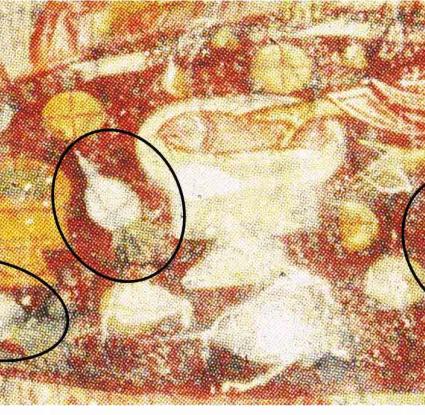Name - Origin
Ραπάνια, ραπανάκιa, ρεπάνια.
Their stem is disc-shaped, like that of a carrot. Their root is spherical or conical in shape and varies in colour between white and red.
Raphanus raphanistrum (Koukoules, 1952 p. 95).
Functional and symbolic role
According to research by Anagnostakis & Papamastorakis (2005, pp. 147-172), since the end of the 11th century and during the 12th century, the progressive presence of radishes in representations of dinners and tables is observed to the extent that, often, on dinner tables only the trilogy of bread, wine and radish is depicted. But what does the appearance of radishes mean? The answer lies in the shift in perceptions and the change in popular and aristocratic trends from the 11th century onwards. In these new times of wine, of the acceptance and quest for pleasure by the rising social class of the cities and the countryside, radish serves either as an appetiser or as a deterrent to intoxication and becomes an integral element when depicting any kind of gathering or symposium (Anagnostakis & Papamastorakis, 2005 pp. 147-172).
Radish in combination with wine functions both as a symbol of ascetic vegetarianism, abstinence, precaution and avoidance of drunkenness and deviance, as well as a symbol, i.e. a driving force of fleshy appetite, excessive drinking and the excitement of passions (Anagnostakis & Papamastorakis, 2005 pp. 147-172).
Additional information and bibliography
E. Anagnostakis & T. Papamastorakis, 2005 '... and radishes for appetizers: on banquets, radishes and wine'. Στο Δ. Παπανικόλα-Μπακιρτζή (επιμ. έκδ.), Βυζαντινών Διατροφή και Μαγειρείαι, σελ. 147-172. Athens: Archaeological Resources and Expropriation Fund.
F. Koukoules, 1952. Βυζαντινών Βίος και Πολιτισμός. Vol. E. Athens.
Athanasios Vrionis

